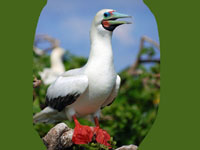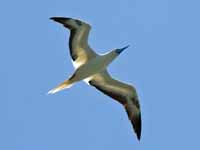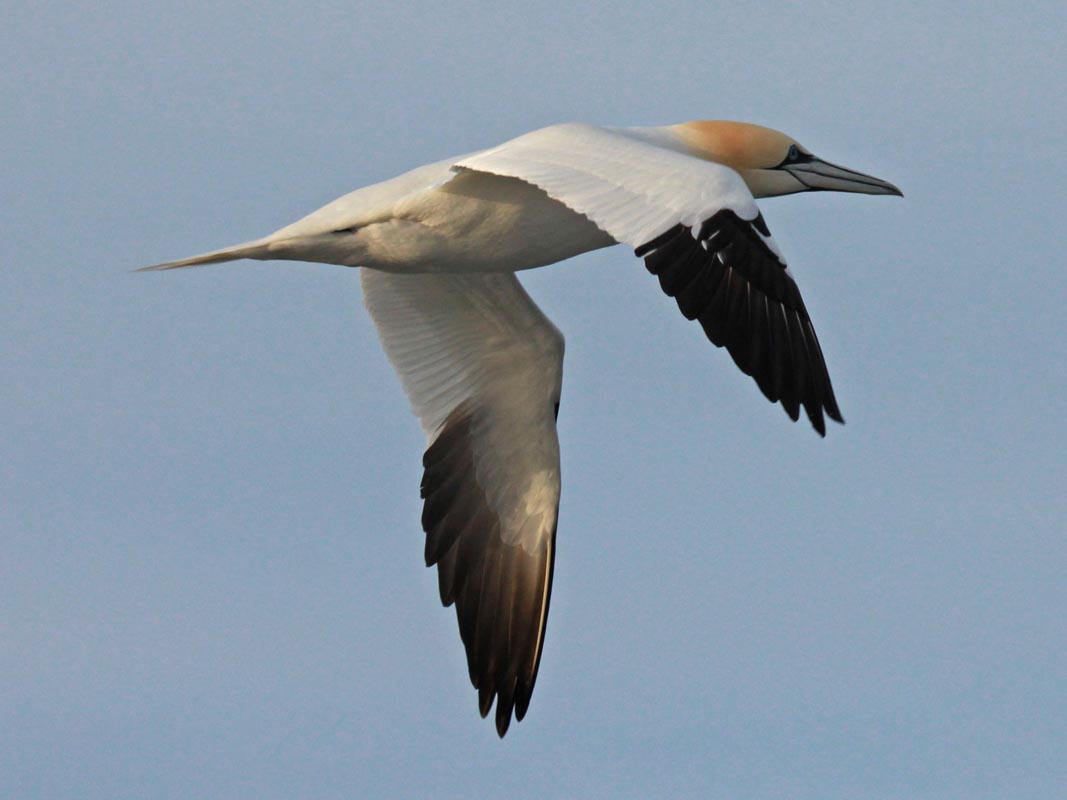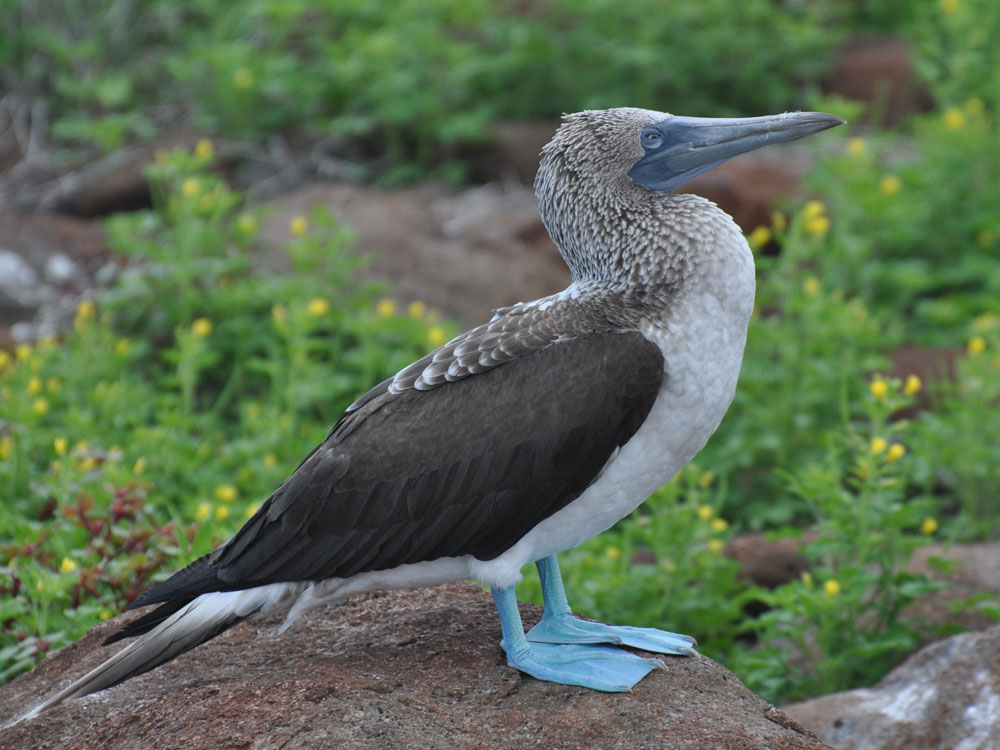SULIFORMES
Suliformes all have webbing that connects four toes. Ths is also true for pelicans and tropicbirds. They contrast with ducks ang geese that have just 3 webbed toes. Quite recently, all of the suliformes were considered to belong to the same order as the pelicans: Pelicaniformes. Suliformes share another property with the pelicans, they all have bare gular sacs. Of course, this sac has evolved to the extreme with pelicans which use it for fishing.
Order Suliformes Family Sulidae
Family Sulidae is comprised of the gannets and boobies. One way to tell gannets from boobies isgannet feathers occur forward of eyes; booby feather stop at eyes.
They are medium-large coastal seabirds that plunge-dive for fish and similar prey. Their body is streamlined which enables efficient diving. Like pelicans, sulids have a well-developed preen gland whose waxy secretions they spread on their feathers for waterproofing. They have stout legs and webbed feet, with the web connecting all four toes. In some species the webs are brightly colored and used in courtship displays. The bill is usually conspicuously colored, long, deep at the base, and pointed.
Gannets
Genus Morus
Gannets belong to the genu Morus. Morus comes from a Greek word meaning "foolish" and it was applied to gannets as when they are breeding they show little fear of humans and are easily killed. The three gannet species all have a yellowish head, black-tipped wings, a long bill, and large wingspans. They are fish eaters and plunge dive to capture their prey. Their wedge-shaped bill aids them to able to dive from 30 meters and thus enter the water at high speeds. Before entering the water, the wings are extended back and held close to the body so that there is less resistance from the water. Otherwise a 100 km/hr entry would break the wings.
The bill has no external nostrils as they would be problematic in a dive; instead the nostrils are in the mouth. Gannets are colonial breeders and it is not uncommon for the colony to number in the thousands.
Gannet, Australasian Morus serrator
Range: Southern and eastern Australian coasts east to New Zealand.
Habitat: Breeds on small islands. Spends much time at sea, but usually not far from land.
Diet: Fish, squid. They will utilize fishing leftovers from fishing boats
Conservation status: Least Concern.
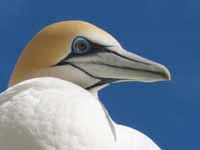



Gannet, Cape Morus capensis
Range: The coasts of southern Africa.
Habitat: Breeds on offshore islands. Spends much time at sea, but usually within 100 km of land.
Diet: Fish. They will utilize fishing leftovers from fishing boats.
Conservation status: Least Concern.

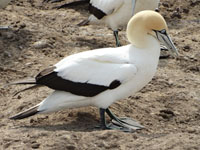
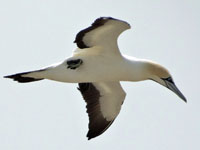

Gannet, Northern Morus bassanus Found: Eastern North America,
Range: Atlantic coasts of North America, Europe, Africa. Medeterranian coasts of Europe, Asia, Africa.
Habitat: Breeds on offshore islands. Spends much time at sea over the continental shelf.
Diet: Fish.
Conservation status: Least Concern.
1) Chick 2) juvenile
 Alan_D_Wilson_4001.jpg)


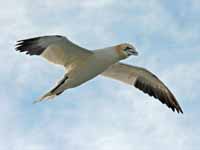
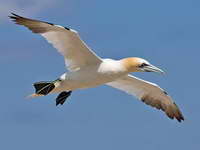

Booby
These birds were supposedly named thus because they so "stupid" they used to land on sailing ships and and let the sailors easily capture them after which they became dinner. They are so similar in looks and action to the gannets, there have been suggestions that all ten of the Sulidae family members should be placed in the same genus. That said, boobies are currently placed separately from gannetts. In fact they are placed in two genera. The Abbott's booby placed in Papsula and the remaining 5 boobies are placed in Sula.
Boobies plunge dive to capture their prey. Their wedge-shaped bill aids them to able to dive from more than meters and thus enter the water at high speeds. Before entering the water, the wings are extended back and held close to the body so that there is less resistance from the water. Facial air sacs under their skin cushion the impact with the water. Unlike pelicans, after the plunge dive, a booby may then pursue its prey underwater. They are also able to catch flying figh. Boobies are colonial breeders on islands and coasts. They normally lay one or more chalky-blue eggs on the ground.
Genus Papasula - 1 species
Booby,_Abbott's Papasula abbotti
Range: Breeds on Christmas Island in Indian Ocean.
Habitat: It is pelagic and can fly for thousands of miles. Usually stays within 100 km of Christmas Island when breeding.
Diet: Fish, squid.
Conservation status: It is listed as Endangered because of logging in its habitat, expecially for phosphate mining.
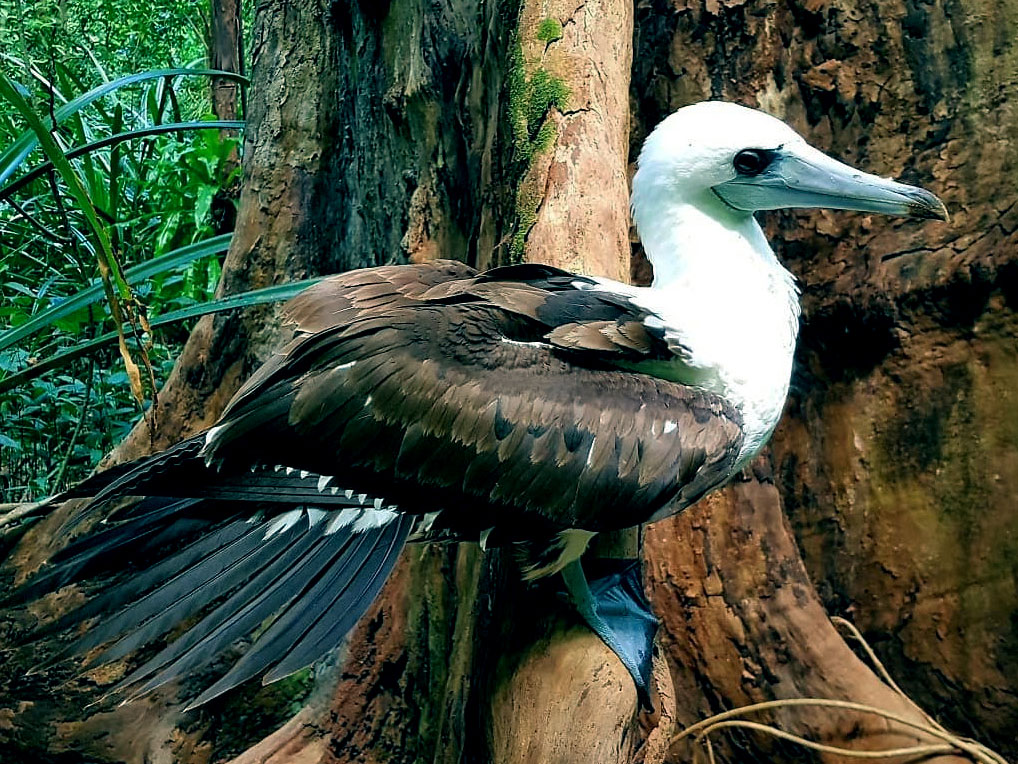
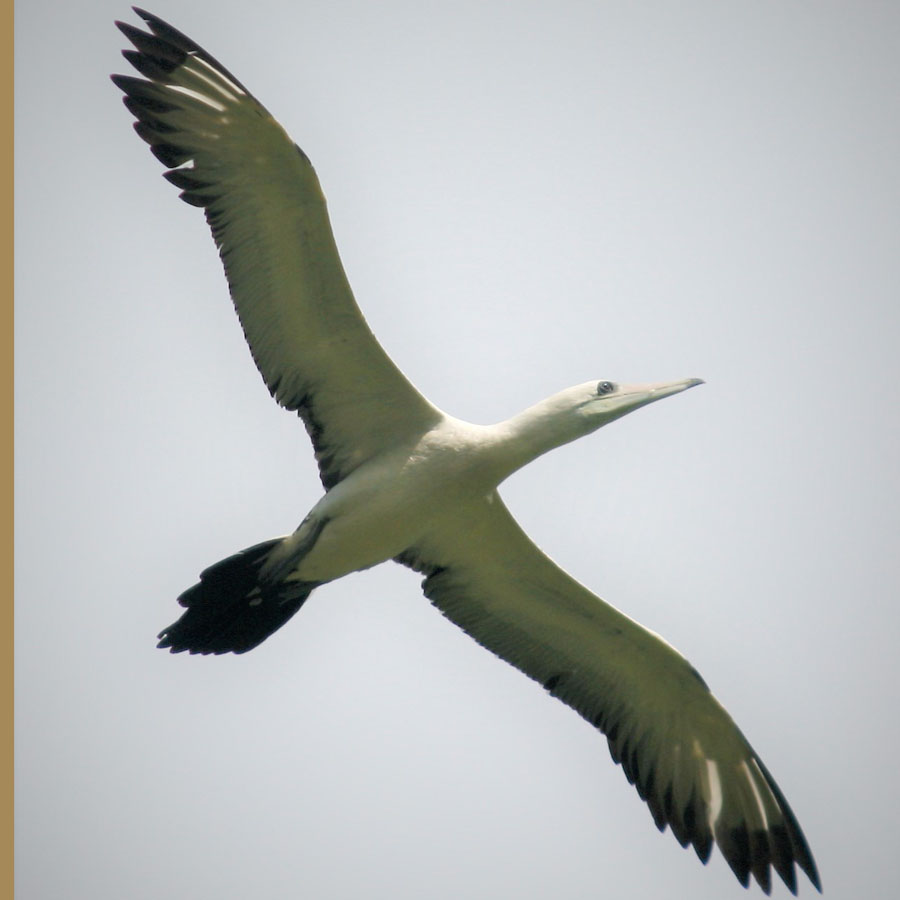
Genus Sula
Booby,_Blue-footed Sula nebouxii Found: North America, South America, other Pacific Islands
Range: Pacific coast of Mexico to Peru of South America. Also islands, especially the Galapagos. The range of the blue-footed booby and Nazca booby are very similar.
Habitat: Breeds on shores, but otherwise is strictly marine.
Diet: Fish.
Conservation status: Least Concern.
1) Juvenile

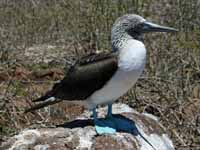

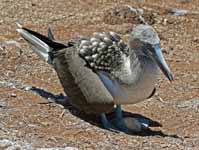


Booby,_Brown Sula leucogaster
Range: Warm waters of North America, South America, Asia, Africa, Australia. It is the most common and most widespread booby.
Habitat: Breeds on rocky islands.
Diet: Fish, squid.
Conservation status: Least Concern.
1) Juvenile 5) From left to right: two Brown Boobies and a Great Frigatebird pursuing a Red-footed Booby that probably has a fish.
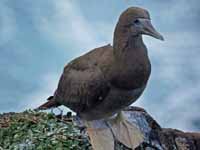


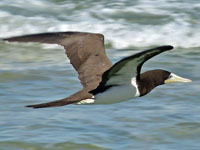

Booby,_Masked Sula dactylatra
Range: Warm waters of North America, South America, Asia, Africa, The range of the masked booby and red-footed booby are very similar.
Habitat: Breeds on small islands.
Diet: Fish, squid.
Conservation status: Least Concern.
1) Juvenile


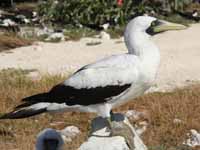
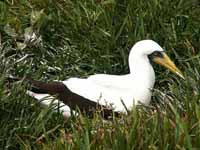
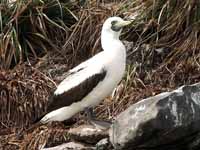
Booby,_Nazca Sula granti
Range: Pacific coast of Central America and northern South America., Galapagos The range of the bule-footed booby and Nazca booby are very similar.
Habitat: Breeds on coastal islands. Otherwise marine and forages farther at sea than other bobbies.
Diet: Fish, squid.
Conservation status: Least Concern.
1) Juvenile


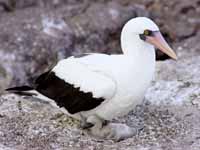
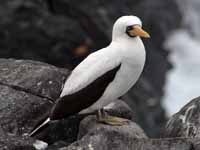

Booby,_Peruvian Sula variegata
Range: Peru.
Habitat: Breeds on shores, but otherwise is strictly marine.
Diet: Fish.
Conservation status: Least Concern.

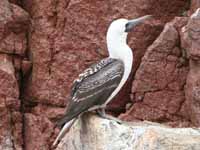


Booby,_Red-Footed Sula sula Found: North America, South America (Galapagos Islands), Asia, Australia
Range: Warm waters of North America, South America, Asia, Africa, The range of the masked booby and red-footed booby are very similar.
Habitat: Breeds on well vegetated islands; pelagic otherwise.
Diet: Fish, squid.
Conservation status: Least Concern.
1, 2, 3) Dark adult 4 - 7) White adult




